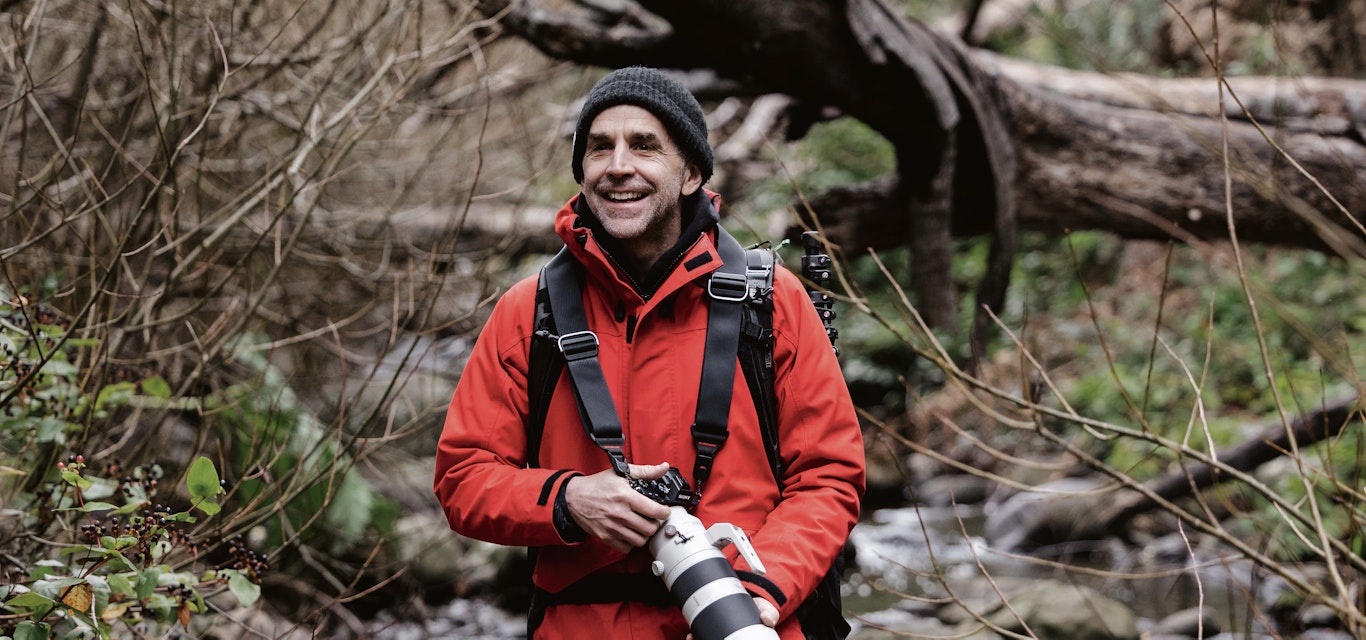A mile in the shoes of a platypus whisperer
Equipped with a camera and plenty of patience, Pete Walsh has become an ambassador for the platypus of the Hobart Rivulet.
On its way from the heights of kunanyi/ Mount Wellington to the Derwent, the Hobart Rivulet flows through the heart of South Hobart. On its leafy banks, along with the many locals commuting, jogging, cycling and walking the dog, you’ll often find Pete Walsh. With camera in hand, Pete is a citizen scientist on a mission to document Hobart’s most elusive residents – the platypus.
Sunrise reveals Pete at his post most mornings, ready with the telephoto lens he uses to capture platypus portraits for the Hobart Rivulet Platypus website and social pages. Pete started photographing platypus during COVID-19 lockdowns, when he noticed the monotremes foraging in more exposed areas (emboldened, he believes, by a reduction in foot traffic). But his hobby transformed into activism after he encountered a platypus entangled in rubbish for the second time in a matter of weeks.
“At that moment I was like, oh my god, I’ve spent so much of my life enjoying nature but not really – it’s not the same thing as caring for it. Caring is definitely an act, outside of yourself,” Pete says. He started posting his platypus pictures online and advocating for their habitat, and it wasn’t long before his reputation as the ‘platypus whisperer’ was fixed.
Credit: Pete Walsh
The urban waterway, which until recently was not treated as much more than a polluted stormwater drain, might seem an unfavourable habitat, but Pete regularly tracks a number of highly territorial platypus as far as the foothills. Over time, the softly spoken Pete has come to know the platypus, and in their own way they know him.
Zoom, the rubbish-entangled female that kickstarted Pete’s quest, regularly ‘zooms’ up to Pete with a distinctive bill waggle. Jeffrey is a hefty male Pete can hear clomping down the rivulet from way off. One little male, Junior, has taken to scurrying right up to Pete and depositing a fresh scat beside him – a potential marking behaviour even veteran platypus researchers had never previously observed.
“It would be nice to think they know me, but you don’t want to get too carried away,” Pete says. “I think that they probably see me as a familiar thing that hasn’t harmed them over a long period of time, so it’s probably all right to go about their business when I’m there.”
These days, in-between his day job in a bike shop, Pete spends every spare moment beside the rivulet. His partner is resigned to sharing The heart and soul of the Hobart Rivulet Platypus group remains a man, his camera and the platypus. him with the cause: “well, we’ve got platypus poo in the freezer,” Pete laughs. “It’s a little bit addictive… Once you’ve seen one and you get a sense if they’re comfortable with you that day – because their mood changes, a bit like people I think – then it’s a beautiful thing to sit there for hours and just watch them.”
The heart and soul of the Hobart Rivulet Platypus group remains a man, his camera and the platypus.
Propelled by Pete’s quiet determination, the Hobart Rivulet platypus fan club is growing. Pete runs education sessions for local schools and aged-care homes, started the Friends of the Hobart Rivulet Platypus with Wildcare Tasmania and petitions council to protect the waterway. Around Hobart, it’s not uncommon to see the platypus stickers for sale on Pete’s website, the proceeds of which fund conservation work. A crowdfunding campaign has secured a 10m-long platypus mural in South Hobart, to be painted by artist Jimmy Dvate this summer.
Despite the growth of the movement, the heart and soul of the Hobart Rivulet Platypus group remains a man, his camera and the platypus.
“They’re kind of like your buddies,” Pete says. “It’s a really sweet, kind of peaceful world.”
